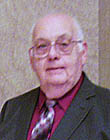|
|
This topic comprises 2 pages: 1 2
|
|
Author
|
Topic: Drive-In FM Transmitter: Identification, Manual, and Volume Problem
|
Daryl C. W. O'Shea
Film God

Posts: 3977
From: Midland Ontario Canada (where Panavision & IMAX lenses come from)
Registered: Jun 2002
|
 posted 08-17-2004 02:40 AM
posted 08-17-2004 02:40 AM





Does anyone recognize what make/model transmitter this is (white unit at top)? Apparently it has a 20 watt output. It transmits in (user selectable) mono or stereo. There are absolutely no labels, tags, or any other identification on it. It's most likely some kit, since it has no identification.
If anyone knows 'what' it is, would anyone have a manual for it?
Better yet, would anyone know how to boost the volume level it transmits? The source isn't the problem, if the source level is increased it clips in the transmitter (definitely not in the pre-amp feeding the transmitter). As it stands now, if you normally listen to the radio at about a third of your radio volume, you have to turn it all the way up to obtain the same level when listening to this transmitter. Not good.
Alternatively, it may not be a transmitter problem at all (I'd still appreciate knowing what it is and a manual though). The antenna is located at the opposite end of the building, probably 50', so maybe it's the cable run. I'd image that quite a few dB are going out the window there. I don't why it's located there, it used to be closer. The cable is in good shape though, and the meter on the transmitter, which as far as I'm told indicates how well the antenna is matched (the knob on the left has 10 positions which affect this meter level), is usually pegged at about zero -- just before the red zone.
I have no idea what is being used for an antenna. I can only hope that it's a proper antenna. It looks just like the antennas in use at some other drive-ins which have no problems.
Thanks! Now that I've typed this out, it probably is the long cable run. Comments still appreciated though!

| IP: Logged
|
|
|
|
Jack Ondracek
Film God

Posts: 2348
From: Port Orchard, WA, USA
Registered: Oct 2002
|
 posted 08-17-2004 08:28 AM
posted 08-17-2004 08:28 AM





Daryl:
The transmitter is from Panaxis Productions. PO Box 130 Paradise, CA 95967-0130 (916) 534-0417.
http://www.panaxis.com
I've got some of those boxes going back to '87, though I've since converted to Broadcast Warehouse transmitters.
It's what's inside that's the rub here. To start with, Panaxis transmitters don't go that high, power-wise, though they should have plenty of power for a drive-in... and a gain antenna would certainly fill-out the corners. And... Ken's right. If that thing is really running a drive-in at 20 watts, you want to be running in the opposite direction! I doubt 20 watt amplifier & power supply would fit in there with the other stuff though.
That box, and the components inside are sold separately, so the exact combination will be hard to nail down without a picture. If it's any more than a couple years old, it could have a stereo generator card (if they transmit that way), and maybe a compressor card, in addition to the power supply and transmitter assemblies. Everything is purchased separately, allowing you to mix-n-match to suit your needs. That particular combination of cards would fill the box. Overall performance is decent enough, though the power level is more like a bit over 250mW or so, depending on the match. It wants a 50 ohm load, though it's pretty forgiving of mismatches.
The VU meter is meaningless. It could be wired through that selector switch to monitor various parameters. However, I didn't use it, because the meter had no buffer and tended to load anything it was supposed to be monitoring.
Oh... everything in there is normally sold in kit form, with some assembly available at extra charge. That could be an issue... or not... depending on who put it together.
Whether your audio is feeding compressor, stereo gen or transmitter directly, it has 10k inputs... consumer grade unbalanced. If that 40 watt Optimus is driving it, you should have some serious padding in front of the transmitter. Unfortunately, too many drive-ins are notorious for using Radio Shack amplifiers as mixers... maybe feeding booth or concession monitors, and taking a tap from the output to drive the transmitter. If it's running mono, look for a pot on the transmitter. If stereo, be careful. The stereo gen has a couple of adjustments that you need a scope and a tone gen to set up properly. The composite output is also on a pot, however, and that will affect the "volume". In the ones I had, it was turned pretty much all the way up. If you can find it (it's closest to the feed line going to the transmitter card), you can check that pot easily enough.
If it has a compressor card, the audio outputs have pots on them, so there's another possibility for getting your modulation up.
If you still need some info on this thing, figure out what's inside it... better yet, take off the top & shoot a picture. I can scare up some docs on it, if it's got what I think it has in there.
Jack
[ 08-17-2004, 01:01 PM: Message edited by: Jack Ondracek ]
| IP: Logged
|
|
|
|
|
|
Daryl C. W. O'Shea
Film God

Posts: 3977
From: Midland Ontario Canada (where Panavision & IMAX lenses come from)
Registered: Jun 2002
|
 posted 08-17-2004 05:39 PM
posted 08-17-2004 05:39 PM





quote: Kenneth Wuepper
I assume that it is Frequency Modulated and operates in the Broadcast band.
Yes, it is an FM transmitter currently transmitting at 90.1. I suppose I should have put that in the body of the post and not just the subject. It's not using a shorted transmission line, it's using an antenna on a mast.
20 watts didn't make a lot of sense to me either, but that's what I was told over the phone. I expect it's probably 200 mW or 250 mW like Jack said.
It is a VU meter, but as Jack said, who knows what it's wired to. It doesn't move in relation to the audio input signal level, it just pegs itself in one spot that changes when you adjust the knob.
Thanks for identifying it Jack!
That RatShack mixer amp is feeding the trasmitter via a line level out, not a powered out. I have no idea what the film audio signal comes into that mixer on, it's been years since I've touched anything in that booth (luckily), and even then it was only to run for one night. It's probably using 10k composite inputs for a CD player or something.
The mixer is being fed by those General Noise pre-amps, probably without any transformers if it was all setup by who I think set it up.
I'll try to get over there tonight to take some pictures of its guts if I can get out of the factory long enough. Anyone want to help setup some robotics?
Gordon, the clipping I mentioned is not the transmitter over mod'ing, I was just trying to say that the GS pre-amp is set as high as it can go (about 5.5) without clipping at the input stage of the transmitter.
David, reception is good throughout the field as far as I know.
Thanks for the help everyone. I didn't want to touch it not knowing anything about it, or if there was anything I could do to make it better (the lack of ID on the unit left me wondering if it was just some piece of junk).
| IP: Logged
|
|
|
|
|
|
|
|
|
|
|
|
|
|
David Buckley
Jedi Master Film Handler
Posts: 525
From: Oxford, N. Canterbury, New Zealand
Registered: Aug 2004
|
 posted 08-18-2004 07:17 AM
posted 08-18-2004 07:17 AM





Ye gads.
The mains inlet is very naughty. Actually, its downright dangerous.
It does look like the switch is a selector for the meter. The meter is indeed unbuffered as Jack suggested above. If the source impedence of whatever feeds this is really low then thats fine, but anything else it'll shunt like hell. Not to mention there appears to be a cap across the meter which will act as a hi-cut filter when an input is connected to the meter. Not good. Anyway, looks like both input channels are selectible, and something else, maybe supply voltage, and audio level to transmitter.
The latter looks like the white wire (insert bomb joke here) connected to the link between the two boards. I suspect that this is the audio path you should have a scope on. And I further suspect that the nearby blue preset is the modulation depth.
Theres too much stuff on the first board to just be a preamp or mono summation - the quad opamp in the corner would do all that. Just noticed - theres a crystal on the pre-amp board. Whats that all about? Cant see the numbers on the chips there. The only thought that wont go away is a BBD delay line, but why? (update: The board being a stereo encoder explains the purpose of this crystal)
The power output of the transmitter must be under a watt. The heatsinking is insufficient to support much power at all.
And whoever built this clearly wasn't aware of good practice of grounding in an audio system - theres ground points all over the place.
I'm confuzzled, so I'm going to bed now - I hope I dont have nightmares over this thing :-)
[ 08-18-2004, 02:46 PM: Message edited by: David Buckley ]
| IP: Logged
|
|
|
|
|
|
|
|
All times are Central (GMT -6:00)
|
This topic comprises 2 pages: 1 2
|
Powered by Infopop Corporation
UBB.classicTM
6.3.1.2
The Film-Tech Forums are designed for various members related to the cinema industry to express their opinions, viewpoints and testimonials on various products, services and events based upon speculation, personal knowledge and factual information through use, therefore all views represented here allow no liability upon the publishers of this web site and the owners of said views assume no liability for any ill will resulting from these postings. The posts made here are for educational as well as entertainment purposes and as such anyone viewing this portion of the website must accept these views as statements of the author of that opinion
and agrees to release the authors from any and all liability.
|

 Home
Home
 Products
Products
 Store
Store
 Forum
Forum
 Warehouse
Warehouse
 Contact Us
Contact Us




 Printer-friendly view of this topic
Printer-friendly view of this topic










![[Wink]](wink.gif) Solid state PA's these days are quite small. for that power level, you'd need about 30VDC to the final stage.
Solid state PA's these days are quite small. for that power level, you'd need about 30VDC to the final stage.



